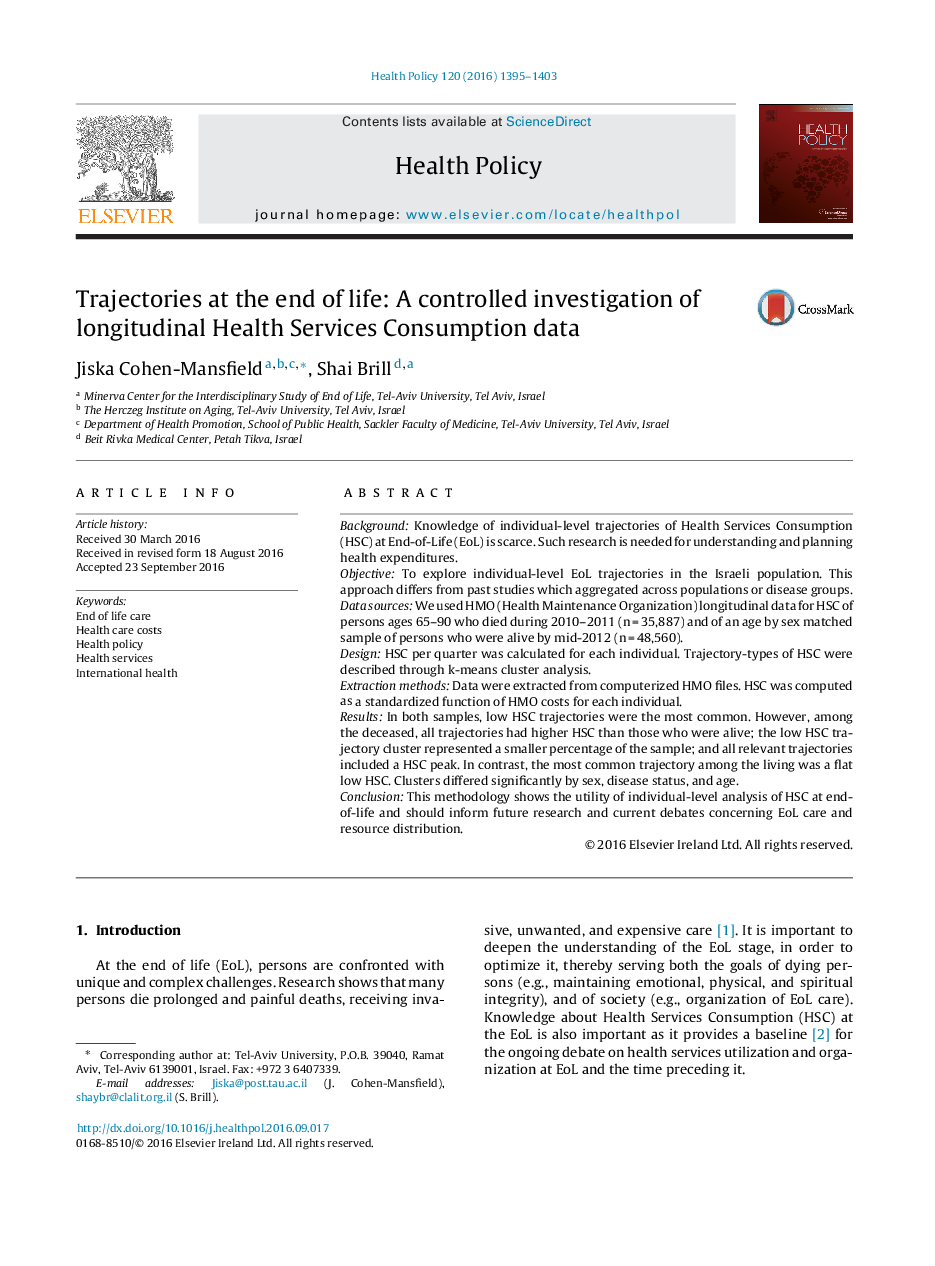| کد مقاله | کد نشریه | سال انتشار | مقاله انگلیسی | نسخه تمام متن |
|---|---|---|---|---|
| 6238882 | 1609017 | 2016 | 9 صفحه PDF | دانلود رایگان |
- This paper is pioneering in its focus on individual-based data driven health service consumption (HSC) trajectories.
- It compares trajectories of deceased persons to a matched living sample.
- HSC trajectories prevalence was related to distance between peak HSC and death.
- Those who died had higher HSC already four years prior to death and significant differences in background data were found between trajectories.
- The findings show the utility of individual-level HSC trajectories and should inform current debates concerning end of life care and policies.
BackgroundKnowledge of individual-level trajectories of Health Services Consumption (HSC) at End-of-Life (EoL) is scarce. Such research is needed for understanding and planning health expenditures.ObjectiveTo explore individual-level EoL trajectories in the Israeli population. This approach differs from past studies which aggregated across populations or disease groups.Data sourcesWe used HMO (Health Maintenance Organization) longitudinal data for HSC of persons ages 65-90 who died during 2010-2011 (n = 35,887) and of an age by sex matched sample of persons who were alive by mid-2012 (n = 48,560).DesignHSC per quarter was calculated for each individual. Trajectory-types of HSC were described through k-means cluster analysis.Extraction methodsData were extracted from computerized HMO files. HSC was computed as a standardized function of HMO costs for each individual.ResultsIn both samples, low HSC trajectories were the most common. However, among the deceased, all trajectories had higher HSC than those who were alive; the low HSC trajectory cluster represented a smaller percentage of the sample; and all relevant trajectories included a HSC peak. In contrast, the most common trajectory among the living was a flat low HSC. Clusters differed significantly by sex, disease status, and age.ConclusionThis methodology shows the utility of individual-level analysis of HSC at end-of-life and should inform future research and current debates concerning EoL care and resource distribution.
Journal: Health Policy - Volume 120, Issue 12, December 2016, Pages 1395-1403
